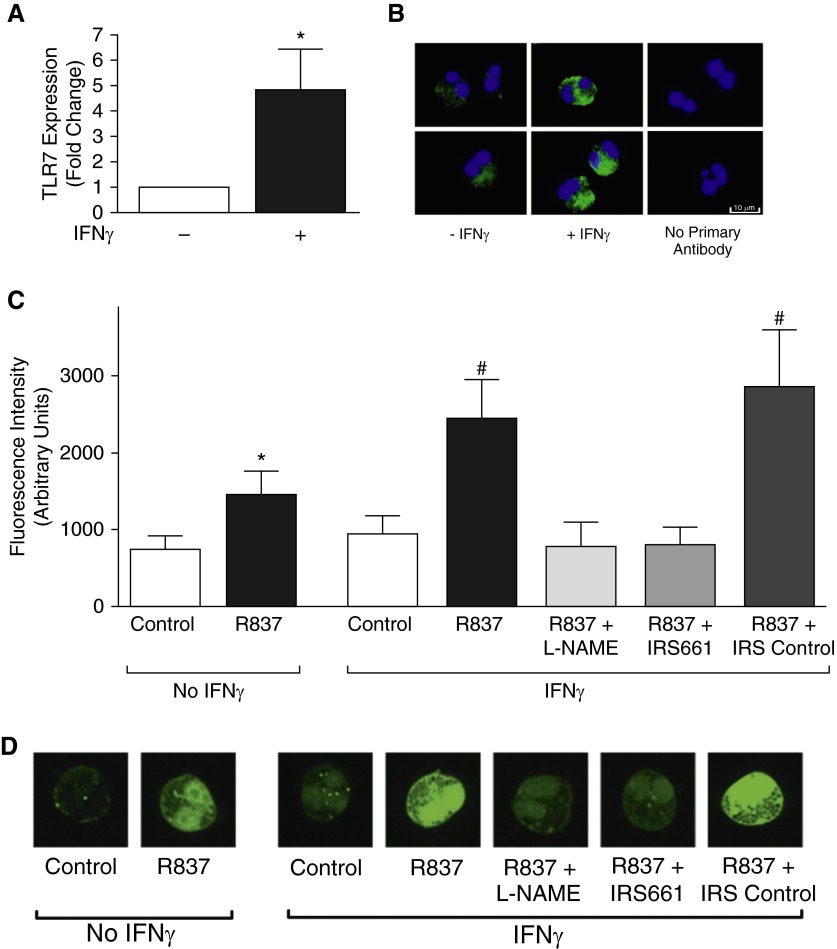Figure 7.
IFNγ up-regulates Toll-like receptor 7 (TLR7) expression and potentiates TLR7-induced nitric oxide production in eosinophils. Human eosinophils were isolated from peripheral blood and grown in culture. (A) TLR7 expression was quantified by real-time RT-PCR from eosinophils treated with or without IFNγ. TLR7 RNA was significantly increased in eosinophils treated with IFNγ compared with untreated eosinophils (n = 5). (B) Eosinophils were immunostained with antibodies against TLR7 (green), and nuclei were labeled with 4′,6-diamidino-2-phenylindole (blue). TLR7 was expressed in unstimulated (−IFNγ) and IFNγ stimulated (+IFNγ) eosinophils. Images obtained with an LSM780 confocal microscope (numerical aperture 1.4; Zeiss, Thornwood, NY). (C) Eosinophils were loaded with an intracellular nitric oxide–detecting fluorescent probe and stimulated with synthetic TLR7 agonist R837. Eosinophil fluorescence increased in response to R837. IFNγ pretreatment potentiated the R837-induced increase in fluorescence. R837-induced fluorescence was blocked by l-NAME and by the oligonucleotide TLR7 antagonist IRS661, but not by a control oligonucleotide (IRS control) (n = 6). (D) Representative images of eosinophils loaded with nitric oxide–detecting fluorophore. Magnification, ×100. *P < 0.05 compared with no IFNγ control. #P < 0.05 compared with all other groups, except between IFNγ-treated R837 and R837 + IRS control. Data are presented as means (±SEM).

